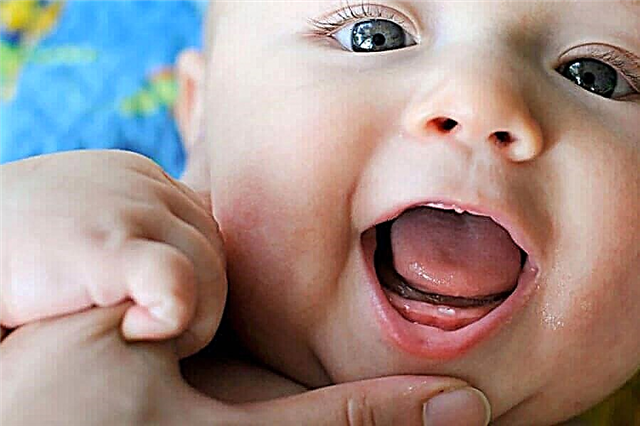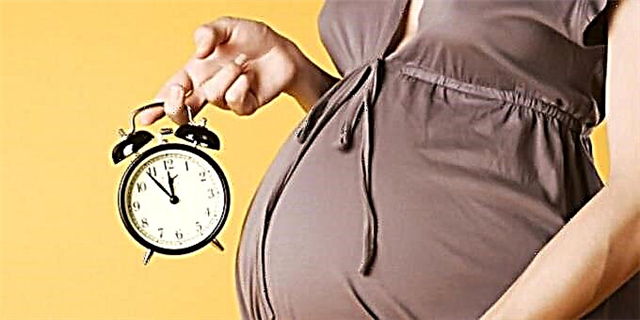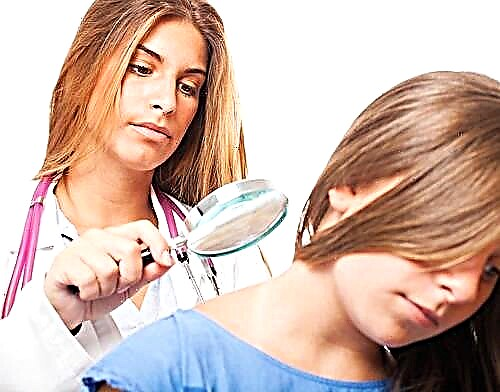Your child grows up every hour, makes you happy with new skills, improves rolling on his tummy, crawling and walking. Unfortunately, keeping track of the fast-moving and nimble creature is quite difficult, and injuries cannot be avoided. What should a loving parent do if a child falls and bumps his head? Call an ambulance or help yourself if the baby falls out of bed? In this article, we will figure out what to do in such a situation and what to look for when the child hits his head.
How can your child get a head injury?
The nervous system of children develops gradually. At first, the child learns to hold his head, turn over, then he begins to better cope with sweeping hand movements. At six months, the baby begins to sit down, crawls, and a little later hesitantly stands on his legs.
Of course, this is a joyous moment for parents when their beloved baby is mastering his first steps. These steps most often end in "squatting" on the bottom, and the baby does not want to take the initiative for several days, since the first fall caused him fear. When this moment is forgotten, the baby tries again, and everything turns out great for him.
But the joy of parents is quickly replaced by fear for their child. After all, the steps are very uncertain, the baby strives to fall on the side, sit down or shift his center of gravity so much forward that it seems that he is about to fall and hit his forehead or nose.
Children feel especially insecure when standing on a soft surface. Therefore, often seeking medical help occurs after falling off the couch. In addition, from the moment you take the first steps, you will know that there are many corners in your house. They are very dangerous, as they are at the level of your child's head, and most often children hit their temples against the corner of one of the pieces of furniture.
Even small children pull on themselves all the things that they cannot see well, but which their palm has reached. And not always there are soft plush toys. Kids pull vases, laptops, lamps, stacks of books and directly "catch" them with their head, on which bumps and bruises form afterwards.
Due to the poorly developed orientation in space, the unimportant interaction of parts of their body and surrounding objects, children constantly stumble, cling to surrounding objects, their legs "braid", which undoubtedly is the reason for falling to the floor.
The baby can fall off the changing table when she learns to roll over onto her tummy.
NEVER leave the baby lying on the changing table unattended, do not turn away from him even "for a second", because it is at this moment that the child will turn over on his tummy and fall from a height of just over one meter. Considering that the head is the hardest part of the baby, he hits it in the first place!
Features of the structure of the child's skull and brain
- in the first years of life in infants, the size of the head increases rapidly. This expresses the imbalance in growth;
- any slight trauma to the skin can cause serious damage, because the child has a poorly developed stratum corneum;
- a feature of the blood supply to the head is a richly developed venous network with many anastomosis. About 18 - 20% of the blood flow from the heart goes directly to the baby's head. These two factors are the risk of massive bleeding from scalp injuries;
- due to the fragile attachment of a thin aponeurosis to the periosteum, extensive cephalohematomas may appear. In children over 6 months of age, the risk is lower;
- the cerebral part of the child's skull is smaller than the facial one. In adolescents and adults, on the contrary, a more extensive facial;
- fontanelles are a feature of babies. They increase the "reserve space" with an increase in brain volume for various pathologies, especially if the child has hit his temple. It contributes to a longer "light interval" for hemorrhages in a baby.
A sharp bulging or / and tension in the fontanelle area is a formidable sign! An urgent need to contact the clinic !;
- the bones that make up the baby's skull are thin, contain few minerals, but rich in water. Due to this feature, linear or depressed fractures are observed, and not multi-splintered, as in adults;
- diploic veins devoid of valves can contribute to the rapid spread of infection from the wound to the cranial cavity;
- the brain grows rapidly until the age of six, then growth slows down;
- the baby's brain is better supplied with arterial blood, but venous outflow is difficult due to the underdevelopment of the veins after the fontanelles are closed;
- nerve fibers are unevenly covered with myelin. At first, they are motor (the child hones skills in walking, coordination of movements, manipulation of hands with objects), only then sensitive. Therefore, the pain is not felt so much;
- The blood-brain barrier is an obstacle between the brain and infectious agents in the environment. In children, it is more permeable, so there is a high probability of exposure to toxic and infectious agents on the nervous system;
- at an early age, in response to trauma, swelling and edema of the brain often occurs, which are dangerous with serious consequences and need to be supervised by a doctor.
What if the child fell and hit his forehead?
- Lift the baby, examine the frontal area for open wounds, changes in the shape of the skull.
- Striking a sharp object can cause gaping wounds in the forehead and profuse bleeding. In this case, it is worth calling emergency medical care and at the same time applying a pressure bandage or bandaging the head with sterile bandages.
- Before medical help arrives, calm down and do not panic. Record changes in the child's behavior, the approximate amount of blood loss, tell the doctor if there was vomiting.
Do not give any pills on your own.
- The child hit his forehead on the corner of the table top, and a "huge" bump came out? Most often, the name "bump" is understood as a subcutaneous hematoma, which could appear when the baby hit his forehead hard and the vessel was damaged, but the skin remained intact. Most often, venous blood comes out under the skin and accumulates. First aid will differ depending on the size of the hematoma and the well-being of the child.
 With a small hematoma and an undisturbed general condition of the child, a cold one can be applied.
With a small hematoma and an undisturbed general condition of the child, a cold one can be applied.
It can be meat or dumplings that are taken from the freezer and applied to the baby's skin ONLY through a clean towel or thick cloth for a short time.
Usually about two to three minutes, followed by a break of five minutes.
A cold object can cause excessive cooling of the skin, and the child, in addition to a hematoma, will receive frostbite!
Seek medical attention immediately if:
- the hematoma is large, causes anxiety and crying of the child, the baby does not allow touching the damaged area;
- the child, after a short cry and the appearance of a lump, quickly fell asleep, does not wake up trying to wake him up.
Do not independently manipulate the wounded area, do not apply ointment or pierce, do not give pain-relieving pills and solutions.
In the first few hours after the child has hit his forehead, he may be disturbed by dizziness, double vision. Younger children will rub their eyes, try not to turn their heads.
Try not to disturb the baby during this period. It is advisable to do without playing on the tablet and watching cartoons. It is necessary to provide visual peace and apply a cool compress to the child's forehead.
How to help if your child has a nose bump?
- If after the blow comes blood from the nose, do not throw the child's head back. Why? Because it is necessary to know how much blood the baby lost if the bleeding did not stop for a long time in order to provide adequate medical care and avoid adverse consequences.
- Lay on a flat surface. So that the baby is not afraid of the sight of blood, you can shallowly insert a sterile gauze napkin into the external nasal passage.
You do not need to try to thrust the gauze pad as deep as possible in order to remove it later without additional trauma to the mucous membrane. It is advisable not to use cotton wool or cotton pads, since you will have to "tear off" a cotton pad soaked with blood from the nasal wall, and cotton wool fibers can impair the regeneration (restoration) of the mucous membrane. If a child has a blood clotting disease, it is necessary to contact a medical institution. There, medication will help stop the blood.
- After the blood has stopped flowing and the child is ready for new exploits, do not let the baby overstrain, monitor the body temperature. There is no need to blow out blood clots or rinse the nose, give the vessels time to recover. In the first two to three days after the child has been hit, thermal procedures are undesirable - a bath, a sauna, a bath.
What should parents do if a child hits the back of the head?
If the child hits the back of the head, don't panic.
The well-known pediatrician Komarosky E.O. draws attention to the fact that when a child fell and hit his head, the parents suffer the most, because many falls are not as serious as they might initially seem. Especially if the baby quickly stopped crying, started playing and even smiles at you, there is no bump at the impact site, the shape of the skull is not changed, the child did not vomit, and there was no blackout.
- Assess the child's condition. If, hitting the back of the head, the baby fainted, cannot calm down for a long time, he has a nosebleed, he stops responding to you, to rattles, or after a short time his body temperature rises, you need to seek medical help.
- Call an ambulance immediately if you notice that a clear fluid is leaking from the nasal passages or ears, since, most likely, this is cerebrospinal fluid (cerebrospinal fluid).
- Parents should provide first aid to their baby. For example, after falling off the couch, a child could get off with slight fright and bruises, without bruises.
First, apply a cold compress that has been wrapped in a cloth or cotton towel.
 In case of small bleeding wounds, do not smear them with iodine solution or "brilliant green", and you should also not treat the wound itself with alcoholic tinctures or vodka. Using unconventional methods, you can cause chemical burns, and the wound will take longer to heal and form scars.
In case of small bleeding wounds, do not smear them with iodine solution or "brilliant green", and you should also not treat the wound itself with alcoholic tinctures or vodka. Using unconventional methods, you can cause chemical burns, and the wound will take longer to heal and form scars.
It is worth treating the wound with hydrogen peroxide, and wipe it around (in the presence of skin contamination) with a swab dipped in an aqueous solution of Chlorhexidine.
If vomiting begins, lay your baby on its side. So the vomit will not enter the bronchi, and the child will not choke. Call an ambulance immediately!
If, a couple of days after your baby hit its head, moans and jerks appear in sleep, chin or hands shake before falling asleep and immediately after, you should see a pediatric neurologist and undergo an examination.
Eliminate spinal injury!
If the child hits his head when falling from the couch, do not suddenly lift him off the floor, since not only the head, but also the spine, especially in the cervical region, could suffer during the blow. Pay attention to movements in the arms and legs. With an integral spinal column, without damaging the spinal cord, the baby makes active movements with arms and legs, shows where it hurts, fingers on his hands are actively clenching and unclenching.
If, after a fall, the child's arms or legs do not move, when he tries to move them, he cries harder, you should seek medical help to exclude fractures.
What should parents do if your child hits his temple?
- After the baby hits his temple, it is necessary to assess whether he hears normally. Pay attention to whether he reacts to harsh sounds, hears rattles or whispers.
- If you notice oddities in the behavior of a child after a blow, expressed in a sharp emotional response to any irritation (for example, with a sharp sound or bright light, the baby begins to cry, run away to another room or hide; a previously sociable child does not understand well the speech addressed to him, requests or actions are performed only after a visual image) it is necessary to consult an ENT doctor with the delivery of an audiogram.
- If a child hits his head in the temple area on a corner and faints, seek immediate medical attention. Neurosonoscopy may be needed if your baby is still an infant. Or an MRI of the brain, if the child is a younger preschool child. It is necessary to exclude fractures of the temporal bone, hemorrhages in the temporal region.
The temporal lobe is involved in the processing of information from the organs of hearing and vision, and is also responsible for understanding speech and emotional responses.
What happens if you do not treat the dysfunction of the brain after trauma?
- Child development delays.
- Speech difficulties.
- Frequent headaches.
- Dizziness.
- Sleep disturbance.
- Epileptic seizures.
- Hyperactive behavior at school.
- Difficulty memorizing new information.
Movement disorders (paresis or paralysis if hemorrhage occurs after injury)
The consequences of head injuries are very different, and, unlike adults, children do not always have a deep injury worse than a superficial one. The consequences will depend on the area in which the damage is, whether it is combined with other injuries, how old the baby is, how quickly the parents sought medical help and whether they followed the doctor's instructions, from the state of the child's body at the time of injury or shock.
You know that all children are different, and the injuries are also different. Therefore, after hitting the head, you should not give children pain relievers, and also give them valerian or motherwort for a sound sleep. This can change the picture of a serious illness and make it difficult to care for the child.



